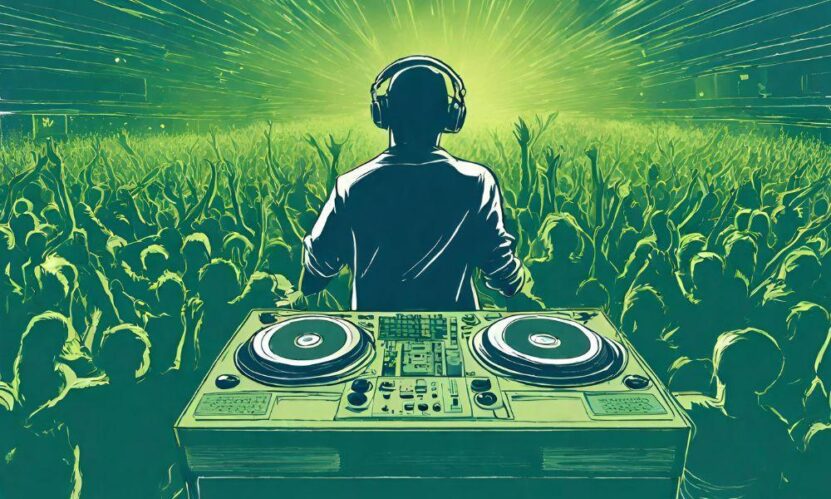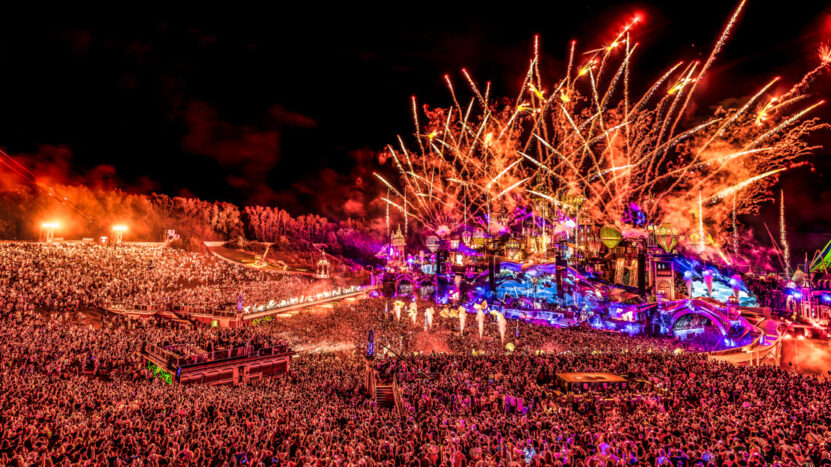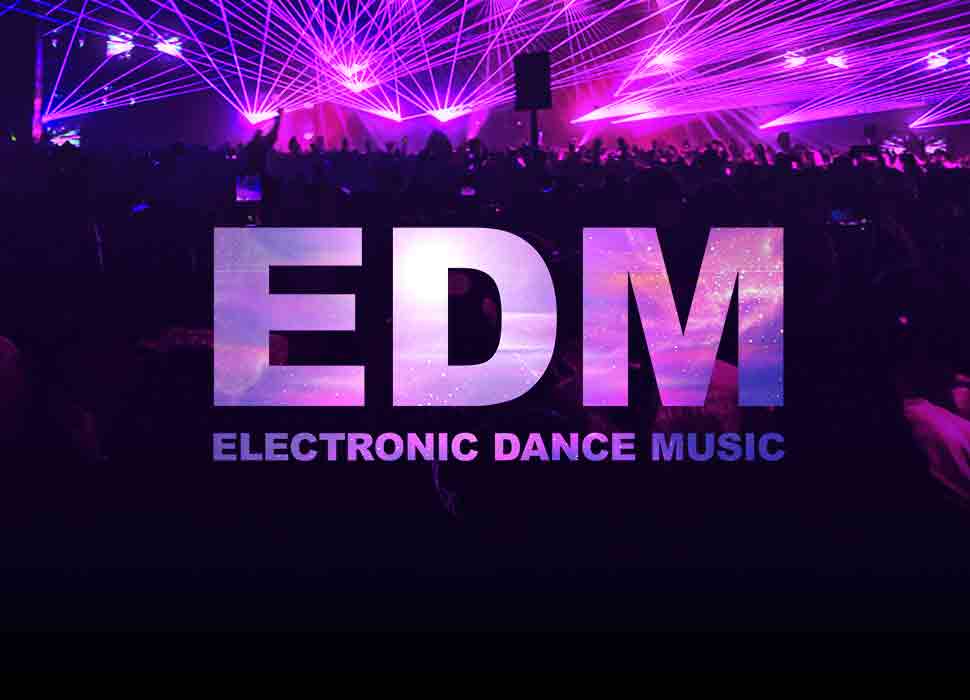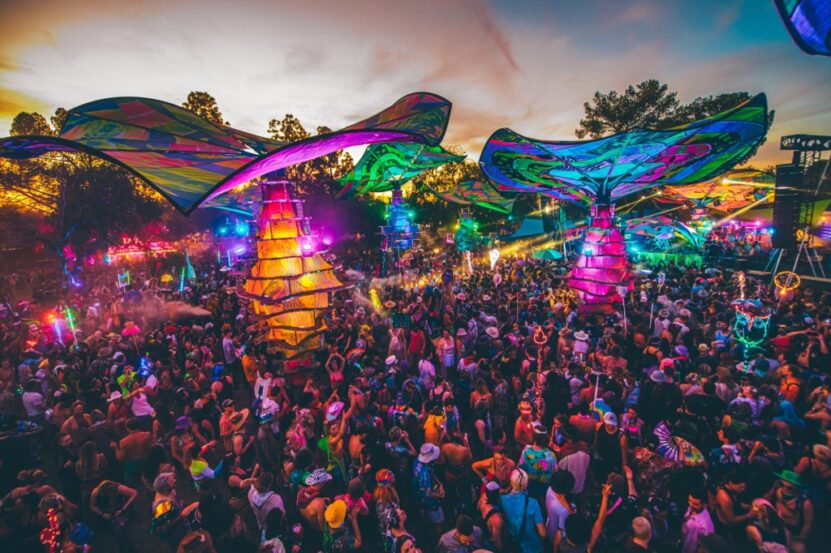Electronic dance music (EDM) has a rich history spanning from the birth of the theremin to the pulsating revelry of Studio 54 to the festivals and underground raves of today.
While a dive into its many sub-genres, including house, techno, drum and bass, dubstep, and trance, among others, could easily fill a book, there are some watershed eras in EDM history that helped the genre as a whole become the euphoric, community-focused music we know today.
Let’s take a look at the timeline of EDM’s evolution, from its humble beginnings to its current state of global dominance.
When Did Electronic Music Get Its Start?

Our journey begins in the early 20th century, a time of experimentation and innovation in the realms of music and technology. During this era, pioneers such as Leon Theremin and Robert Moog laid the groundwork for what would eventually become electronic music.
With the invention of revolutionary instruments like the theremin and the synthesizer, artists gained access to a vast sonic palette previously unimaginable. It wouldn’t be the last time technology played such an important role — but in a way, it was the first.
As electronic music continued to evolve throughout the mid-20th century, it found its place in avant-garde circles and experimental compositions. Artists like Karlheinz Stockhausen and Wendy Carlos pushed the boundaries of traditional music, embracing the possibilities offered by electronic instruments.
The Rise of Disco and Synthpop
Fast forward to the 1970s, and we witness the rise of disco and synthpop, two genres that would play a pivotal role in shaping the sound of electronic dance music. With its pulsating rhythms and infectious grooves, disco captured the hearts of music lovers around the world, dominating dance floors and airwaves alike.
Meanwhile, synthpop emerged as a fusion of electronic music and pop sensibilities, characterized by its use of synthesizers and electronic instrumentation. During this time, artists like Giorgio Moroder and Donna Summer revolutionized the sound of disco with hits like “I Feel Love,” which featured pioneering electronic production techniques.
Bands like Kraftwerk and Depeche Mode paved the way for synthpop, too. They blended catchy melodies with futuristic soundscapes and set the stage for EDM as we know it today.
When Did EDM Appear as We Know It Today?

While its origins can be traced back to the 1970s, EDM gained widespread popularity in the 1980s and 1990s and has been growing ever since, with festivals like Tomorrowland and Electric Daisy Carnival drawing huge crowds.
As we entered the 1980s and 1990s, we witnessed the birth of EDM as we know it today. Drawing inspiration from disco, synthpop, and underground dance scenes, artists began experimenting with electronic beats and production techniques on a larger scale. Genres like house, techno, and trance emerged, each bringing its own unique flavor to the dance floor.
It was during this time that iconic clubs like The Warehouse in Chicago and Paradise Garage in New York City became meccas for dance music enthusiasts, providing a platform for DJs and producers. Tracks like “Acid Tracks” by Phuture and “Strings of Life” by Derrick May became anthems of the burgeoning rave scene, laying the foundation for the global EDM phenomenon.
What Was the Golden Era of EDM?

As we step into the 2000s and early 2010s, we find ourselves amidst the golden era of EDM. This period witnessed an unprecedented explosion of electronic dance music, with festivals like Ultra Music Festival, Tomorrowland, and Electric Daisy Carnival attracting massive crowds from around the globe.
DJs and producers became household names, as tracks like “Levels” by Avicii and “Titanium” by David Guetta dominated the airwaves. The rise of social media and streaming platforms further propelled EDM into the mainstream, allowing artists to connect with fans on a more intimate level.
Innovations in Sound and Technology
Advancements in software and hardware have empowered artists to explore new sonic territories, pushing the boundaries of what’s possible in electronic music production. From complex synthesizers to cutting-edge digital audio workstations, the tools available to producers today are more powerful and versatile than ever before.
Meanwhile, artists continue to innovate and experiment with sound design, incorporating elements from a wide range of genres and musical traditions. From the glitchy textures of IDM to the pounding basslines of dubstep, the sonic landscape of EDM is constantly evolving, fueled by a spirit of creativity and exploration.
What Is the Future of EDM?

One thing is certain: the EDM scene shows no signs of slowing down. With emerging technologies like virtual reality and artificial intelligence, the possibilities for innovation are endless. Modern DJs like Anyma, Knock2, and Fred Again push boundaries and reimagine classic conventions, while festivals and shows like Afterlife, Lightning in a Bottle, and the Boiler Room sets show that EDM’s ability to bring people together through music will never slow down.
We can expect to see even greater integration of immersive experiences and interactive elements into live performances, blurring the lines between reality and virtuality.
The Global Spread of EDM
As EDM continued to thrive in the Western world, it began to make significant inroads into Asia and Latin America in the late 2000s and early 2010s. Countries like South Korea, Japan, and Brazil embraced the genre, tailoring it to their unique cultural tastes and contributing to the global tapestry of electronic music. In Asia, the rise of K-pop incorporated EDM elements, blending them with pop structures to create infectious hits that resonated worldwide. Meanwhile, in Latin America, local DJs fused traditional rhythms like reggaeton and samba with EDM beats, creating a vibrant, energetic sound that energized dance floors both locally and internationally.
Women in EDM
While the EDM scene has often been male-dominated, numerous female DJs and producers have risen to prominence and pushed the genre in new directions. Artists like Alison Wonderland, REZZ, and NERVO have not only produced chart-topping tracks but also helped to challenge the gender norms within the industry. Their success and influence have paved the way for upcoming female artists, promoting greater inclusivity and diversity within the EDM community. These women bring fresh perspectives and sounds to the scene, ensuring that EDM continues to evolve and reflect a broader range of voices and experiences.
